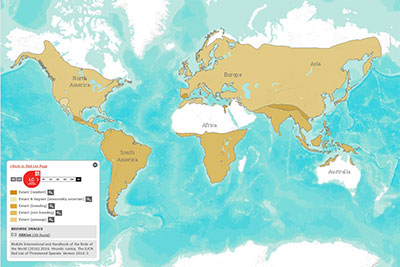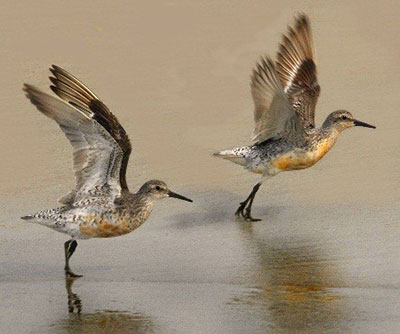Unlike the majority of humans, many animals don’t have a settled place of abode. Birds especially are known to travel far and wide, crossing many borders and clocking up many miles in a given year. In recognition of the movement of these birds, International Migratory

Bird Day is celebrated at different times in various Regions across the world. In May, the celebration occurs in North America. In their migratory route, many birds pass through Guyana, even settling here for a few months throughout the year, usually from early October to late March. The extensive travelling that these birds do, exposes them to both natural and human induced threats..
The theme for this year’s Migratory Bird Day observance is‘Their future is our future’, it highlights the fact that people and nature share the same planet with the same limited resources and once biodiversity are affected, humans will also be affected.
This year, seven (7) bird species have been chosen as ambassadors to represent the plight of migratory birds. These are barn swallow, black-tailed godwit, amur falcon, garganey, yellow-breasted bunting, red knot and spoonbilled sandpiper.

In this article we focus on the two birds in this group that are common to South America.
The Barn Swallow can be found nearly worldwide—breeding across the Northern Hemisphere and wintering in the Southern Hemisphere as far away as Argentina and Australia. These bright blue birds are known for their abundance in open spaces such as pastures and fields. Human activities, such as land reclamation and overuse of pesticides in

agriculture have led to population decline and also loss of habitat. In recent years, the Barn Swallow population has declined.Since these birds act as a form of pest control by feeding on bugs and insects their population decline has meant an increase in insect pests.
The Barn Swallow is an international symbol of bird migration and is a strong indicator of threatened habitats affecting similar bird species. As human interference and land reclamation begin to wreak havoc on the swallow population, similar birds may already be suffering the consequences.
Unlike other shorebirds, the Red Knot makes a harrowing 14,000 kilometre journey along the Atlantic flyway from South America and along the East Asian-Australasian Flyway all the way up to the Arctic Circle for breeding. This exhausting trip requires several stops along the shores of the Yellow Sea and the Atlantic coast. These stops are vital for the species’ survival.

Recent reclamation on the Yellow Sea along with an increase in Atlantic horseshoe crab fishing, whose eggs the birds feed on during migration, have led to widespread habitat loss (80% decline in the Americas). The rapid population decline has placed the Red Knot at near-threatened, according to the IUCN Red List.
Waterbirds mainly migrate to Guyana during the winter and they are found in two main areas:
1. The estuaries of the Atlantic Ocean namely:
• Waini River
• Essequibo River
• Demerara River
• Mahaica River
• Mahaicony River
2. In the hinterland of Guyana they are found close to the Rupununi River and Rewa River.
DID YOU KNOW?
International Migratory Bird Day (IMBD) officially takes place on the second Saturday in May in the U.S. and Canada but in Mexico, Central and South America, and the Caribbean it is celebrated in October each year.
Source:
http://www.worldmigratorybirdday.org/
C/O Environmental Communication, Education and Awareness programme, Environmental Protection Agency, Ganges Street, Sophia, GEORGETOWN,tele; 225-5467-9, facebook; Environmental Protection Agency- Guyana or email us at: eit.epaguyana@gmail.com



.jpg)









